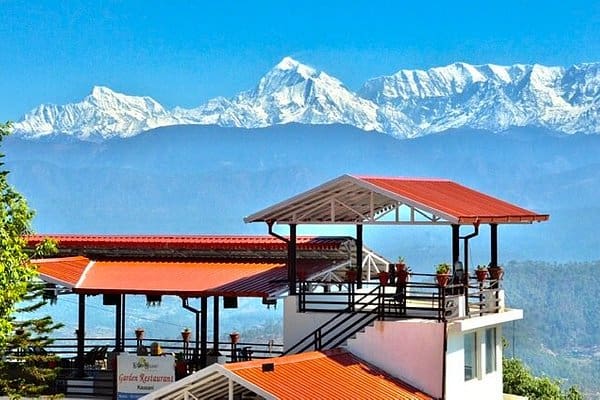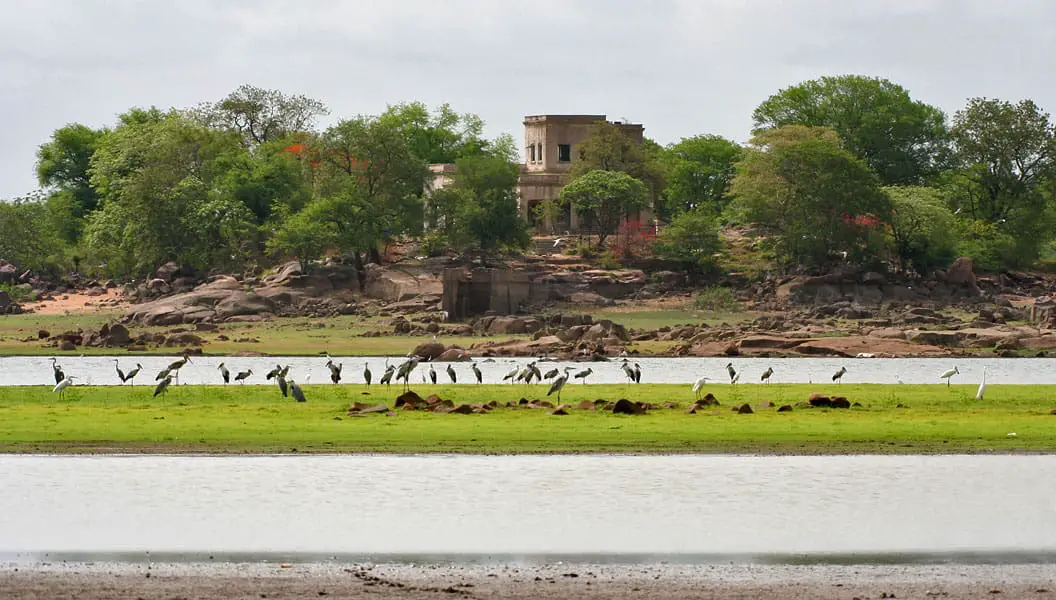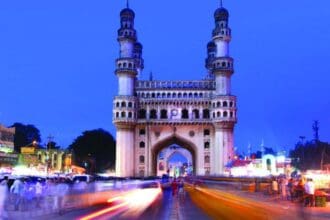Nestled in the Kumaon region of Uttarakhand, Binsar is a tranquil hill station that offers breathtaking views of the Himalayan peaks, lush forests, and serene landscapes. Known for its untouched natural beauty and rich biodiversity, Binsar is a paradise for nature lovers, trekkers, and those seeking solace away from the hustle and bustle of city life. Whether you’re looking for spiritual enlightenment, adventure, or simply a peaceful retreat, Binsar has something for everyone. In this comprehensive guide, we will explore the top 5 places to visit in Binsar , ensuring your journey is as enriching as it is memorable.
1. Binsar Wildlife Sanctuary: A Haven for Nature Enthusiasts
A Biodiversity Hotspot
The Binsar Wildlife Sanctuary , sprawling across 47 square kilometers, is one of the most prominent attractions in the region. Declared a sanctuary in 1988, this protected area is home to a diverse range of flora and fauna, making it a haven for wildlife enthusiasts and photographers alike.
Exploring the Sanctuary
Visitors can embark on guided treks through the sanctuary, where they may encounter species such as leopards, Himalayan black bears, barking deer, and numerous bird species. The dense oak, rhododendron, and pine forests create a serene atmosphere, perfect for reconnecting with nature. Birdwatchers will be delighted by the sight of rare Himalayan birds like the Himalayan monal, koklass pheasant, and various species of eagles.
Why It’s a Must-Visit
For those who appreciate the raw beauty of nature, the Binsar Wildlife Sanctuary offers an unparalleled experience. Its pristine environment and panoramic views of the Himalayan peaks make it a must-visit destination in Binsar.
“In the heart of Binsar Wildlife Sanctuary, every step feels like a journey into the soul of the Himalayas.”
Detailed Insights into Binsar Wildlife Sanctuary
To truly understand the significance of the Binsar Wildlife Sanctuary, let us delve deeper into its ecological, cultural, and recreational aspects.
Ecological Importance
The sanctuary plays a crucial role in maintaining the ecological balance of the Kumaon region. Its dense forests act as a carbon sink, while its water sources feed nearby rivers and streams. The sanctuary also serves as a critical habitat for endangered species, contributing to global conservation efforts.
Trekking Trails
Several well-marked trails wind through the sanctuary, catering to hikers of all skill levels. The most popular route leads to the Zero Point, offering panoramic views of snow-capped peaks like Nanda Devi, Trishul, and Panchachuli. Along the way, visitors can enjoy the vibrant colors of rhododendron blooms during spring.
Photography Opportunities
The sanctuary provides endless opportunities for photography enthusiasts. From close-up shots of exotic birds to wide-angle landscapes capturing the majestic Himalayas, the possibilities are limitless. Early morning visits are particularly recommended, as the soft light enhances the colors of the surroundings.
Visitor Facilities
While the focus of the sanctuary is undoubtedly on nature, visitor facilities are well-maintained to ensure a comfortable experience. There are designated picnic areas where families can relax and enjoy meals amidst the greenery. Restrooms and drinking water stations are conveniently located throughout the park, and there is even a small café serving refreshments made from locally sourced ingredients.
2. Zero Point: The Crown Jewel of Binsar
A Panoramic Vista
The Zero Point , located at the highest elevation in Binsar, is a must-visit for anyone traveling to the region. This vantage point offers uninterrupted, 360-degree views of the Himalayan range, including iconic peaks like Nanda Devi, Trishul, and Kedarnath.
What to Expect
Reaching Zero Point requires a short trek through dense forests, but the effort is well worth it. As you ascend, the air becomes cooler and crisper, and the sounds of the forest grow quieter. Upon arrival, you’ll be greeted by a breathtaking panorama that stretches as far as the eye can see.
Why It Stands Out
The Zero Point stands out not only for its stunning views but also for the sense of tranquility it offers. It’s an ideal spot for meditation, photography, or simply soaking in the majesty of the Himalayas.
Detailed Insights into Zero Point
Zero Point is more than just a scenic viewpoint; it is a symbol of Binsar’s natural beauty and spiritual essence. Let’s explore what makes this destination so captivating.
Best Time to Visit
The best time to visit Zero Point is early morning, when the mist lifts to reveal the snow-clad peaks bathed in golden sunlight. Sunset visits are equally magical, as the sky transforms into a canvas of fiery hues.
Spiritual Significance
Many locals believe that Zero Point holds spiritual energy due to its elevated position and proximity to the heavens. Visitors often perform small rituals or meditate here to connect with their inner selves.
Photography Tips
To capture the perfect shot, bring a tripod and experiment with different angles. Wide-angle lenses work best for capturing the vast expanse of the Himalayas, while telephoto lenses allow you to zoom in on distant peaks.
Accessibility
While the trek to Zero Point is relatively easy, it may pose challenges for elderly or physically challenged individuals. Local guides are available to assist visitors, ensuring a safe and enjoyable experience.
3. Jageshwar Temples: A Spiritual Retreat
A Sacred Cluster of Shrines
The Jageshwar Temples , located about 30 kilometers from Binsar, are a group of ancient Hindu temples dedicated to Lord Shiva. Believed to date back to the 9th century, these temples are steeped in history and spirituality.
Exploring the Temples
The complex consists of over 100 stone temples, each adorned with intricate carvings and sculptures. The main temple houses a lingam believed to be self-manifested, drawing thousands of pilgrims annually. Surrounded by deodar trees, the temples exude a serene ambiance that invites introspection.
Cultural Significance
Beyond their religious importance, the Jageshwar Temples are architectural marvels that reflect the craftsmanship of ancient artisans. They are also considered one of the 12 Jyotirlingas, adding to their spiritual allure.
“At Jageshwar Temples, time seems to stand still, allowing you to connect with the divine.”
Detailed Insights into Jageshwar Temples
The Jageshwar Temples are not just places of worship; they are living monuments that tell the story of India’s rich cultural heritage. Let’s uncover some of the hidden gems that await explorers.
Historical Context
The origins of the temples remain shrouded in mystery, with references found in ancient texts like the Skanda Purana. Over the centuries, the temples have undergone several renovations, reflecting the evolving styles of different eras.
Architectural Features
The temples showcase Nagara-style architecture, characterized by towering spires and ornate carvings. Each temple tells a unique story through its design, depicting scenes from Hindu mythology and daily life.
Festivals and Celebrations
The temples come alive during festivals like Maha Shivaratri and Shravan Maas, when devotees flock to seek blessings from Lord Shiva. Rituals such as Rudrabhishek and Abhishek are performed regularly, creating an aura of devotion.
Visitor Experience
While the temples are undoubtedly the highlight, the surrounding area offers additional attractions. The Jageshwar Museum displays artifacts unearthed during excavations, providing insights into the region’s history. Nearby, the Dandeshwar Temple adds another layer of spiritual significance.
4. Binsar Mahadev Temple: A Blend of Mythology and Tranquility
A Sacred Shrine Amidst Nature
The Binsar Mahadev Temple , located within the Binsar Wildlife Sanctuary, is a lesser-known yet equally enchanting destination. Dedicated to Lord Shiva, this temple is surrounded by dense forests and offers a peaceful escape from the crowds.
Exploring the Temple
The temple’s rustic charm lies in its simplicity. Unlike other grand shrines, Binsar Mahadev Temple exudes a quiet elegance that resonates with visitors. A small stream flows nearby, adding to the tranquil ambiance.
Why It’s Worth Visiting
For those seeking solitude and spiritual connection, the Binsar Mahadev Temple is a hidden gem. Its secluded location makes it an ideal spot for meditation and reflection.
Detailed Insights into Binsar Mahadev Temple
The Binsar Mahadev Temple is a testament to the harmonious coexistence of humans and nature. Let’s delve into what makes this destination so captivating.
Mythological Importance
According to local legends, the temple was built by the Pandavas during their exile. Stories of their trials and tribulations resonate deeply with visitors, inspiring them to embark on their own journeys of self-discovery.
Natural Surroundings
The temple is enveloped by thick forests teeming with wildlife. Visitors may spot deer, monkeys, and various bird species during their visit. Seasonal flowers add splashes of color to the verdant landscape, creating a visual feast for the eyes.
Spiritual Practices
Devotees often perform rituals such as Rudrabhishek and Abhishek at the temple. These ceremonies are believed to cleanse sins and bring peace and prosperity. Many tie threads on the temple premises as a symbol of their vows and prayers.
Accessibility
Reaching the temple requires a short trek through the forest, making it accessible only to those willing to embrace nature. Local guides are available to assist visitors, ensuring a safe and enjoyable experience.
5. Kathgodam Railway Station: Your Gateway to Binsar
A Convenient Entry Point
While not technically part of Binsar, Kathgodam Railway Station serves as the gateway to the region. Located approximately 80 kilometers from Binsar, this bustling station connects major cities like Delhi and Lucknow to the Kumaon hills.
What to Do
Upon arriving at Kathgodam, travelers can hire taxis or buses to reach Binsar. The drive itself is scenic, passing through picturesque villages and terraced fields. Along the way, you’ll get a glimpse of rural life in Uttarakhand.
Why It’s Important
Kathgodam Railway Station plays a vital role in facilitating tourism in Binsar. Its connectivity ensures that travelers from across India can easily access this hidden gem.
Detailed Insights into Kathgodam Railway Station
Kathgodam Railway Station is more than just a transit hub; it is the starting point of many unforgettable journeys. Let’s examine some of the key features that make it significant.
Transport Options
From Kathgodam, multiple transport options are available, including private taxis, shared cabs, and state-run buses. Private taxis offer convenience and flexibility, while shared cabs are budget-friendly.
Scenic Routes
The road from Kathgodam to Binsar passes through Almora, offering stunning views of the Kosi River and terraced farms. Stops at viewpoints like Kasar Devi and Chitai Temple provide opportunities to stretch your legs and take photos.
Local Markets
Before embarking on your journey to Binsar, consider exploring the local markets in Kathgodam. Here, you’ll find handicrafts, woolen garments, and organic produce typical of the Kumaon region.
Travel Tips
It’s advisable to book transportation in advance, especially during peak tourist seasons. Carry snacks and water for the journey, as roadside eateries may be limited.
Other Notable Attractions Near Binsar
While the above five destinations are the highlights of Binsar, there are several other attractions worth exploring:
Kasar Devi Temple
Perched atop a hill near Almora, the Kasar Devi Temple offers panoramic views of the Himalayas and is believed to possess mystical energy.
Chitai Temple
Dedicated to Golu Devta, the Chitai Temple is famous for its unique tradition of hanging bells as offerings. It’s a fascinating blend of folklore and spirituality.
Tips for Travelers Visiting Binsar
To ensure a smooth and enjoyable trip, keep the following tips in mind:
- Best Time to Visit : March to June and September to November are ideal due to pleasant weather.
- Permits : No special permits are required for visiting Binsar.
- Local Cuisine : Try regional delicacies like aloo ke gutke, bal mithai, and singodi.
- Respect Local Customs : Dress modestly and seek permission before photographing religious sites.
Conclusion
Binsar is more than just a destination; it’s an invitation to immerse yourself in the wonders of nature, culture, and spirituality. From the panoramic views of Zero Point to the tranquil ambiance of the Binsar Mahadev Temple , each location offers a unique perspective on what makes this region so special. By embracing sustainable tourism and respecting local traditions, we can ensure that future generations continue to cherish these treasures.
“In Binsar, every path leads to serenity, and every moment becomes a cherished memory.”
Frequently Asked Questions (FAQs)
- What is the best time to visit Binsar?
- The best time to visit is between March and June or September and November when the weather is mild and pleasant.
- Do I need permits to enter Binsar?
- No, no special permits are required for visiting Binsar.
- How do I reach Binsar?
- Binsar is accessible via road from Kathgodam Railway Station, which is well-connected by train to major cities like Delhi and Lucknow.
- Are there accommodation options available?
- Yes, there are hotels, guesthouses, and homestays catering to different budgets.
- What activities can I enjoy in Binsar?
- Popular activities include trekking, birdwatching, temple visits, and enjoying panoramic views of the Himalayas.
- Is Binsar safe for solo travelers?
- Yes, Binsar is generally safe, but it’s advisable to stay informed about local guidelines.
- Can I visit Jageshwar Temples from Binsar?
- Yes, it is easily accessible by road.
- What should I pack for my trip?
- Pack comfortable clothing, sturdy shoes, sunscreen, insect repellent, and a camera.
- Are there medical facilities available?
- Basic healthcare services are available, but it’s recommended to carry a first aid kit.
- What makes Binsar unique compared to other destinations?
- Its combination of natural beauty, spiritual significance, and offbeat charm sets it apart.














